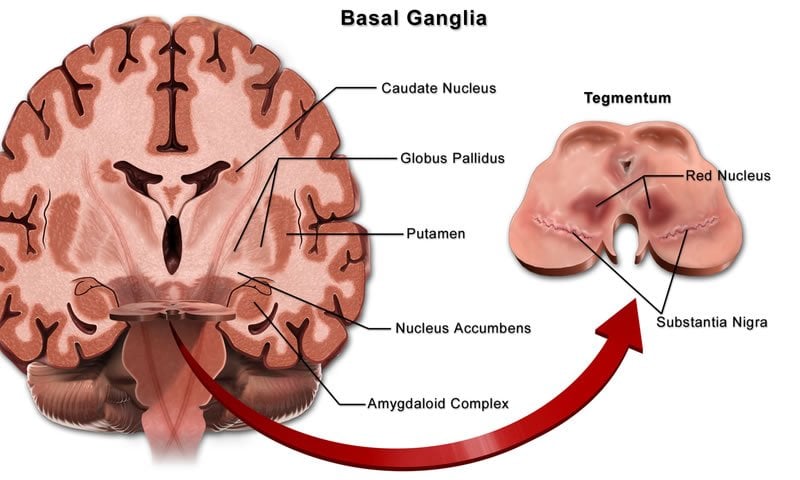McGill researcher pinpoints an important role of the basal ganglia in vocal learning across species.
When you throw a wild pitch or sing a flat note, it could be that your basal ganglia made you do it. This area in the middle of the brain is involved in motor control and learning. And one reason for that errant toss or off-key note may be that your brain prompted you to vary your behavior to help you learn, from trial-and-error, to perform better.
But how does the brain do this, how does it cause you to vary your behavior?
Along with researchers from the University of California, San Francisco, Indian Institute of Science Education and Research and Duke University, Professor Sarah Woolley, Department of Biology, investigated this question in songbirds, which learn their songs during development in a manner similar to how humans learn to speak. In particular, songbirds memorize the song of their father or tutor, then practice that song until they can produce a similar song.

“As adults, they continue to produce this learned song, but what’s interesting is that they keep it just a little bit variable” says Woolley. “The variability isn’t a default, it isn’t that they can’t produce a better version, they can — in particular when they sing to a female. So when they sing alone and their song is variable it’s because they are actively making it that way.”
The team used this change in the variability of the song to look at how the activity of single cells in different parts of the brain altered their activity depending on the social environment.
“We found that the social modulation of variability emerged within the basal ganglia, a brain area known to be important for learning and producing movements not only in birds but also in mammals, including humans” says Woolley. “This indicates that one way that the basal ganglia may be important in motor learning across species is through its involvement in generating variability.”
The researchers studied song birds because they have a cortical-basal ganglia circuit that is specific for singing. In contrast, for most behaviors in other species, the cortical-basal ganglia cells and circuits that are important for particular behaviors, like learning to walk, may be situated right next to, or even intermingled with cells and circuits important for other behaviors. “The evolution in songbirds of an identifiable circuit for a single complex behavior gives us a tremendous advantage as we try to parse out exactly what these parts of the brain do and how they do it,” says Woolley.
Useful for Parkinson’s disease
The basal ganglia is dramatically affected in illnesses such as Parkinson’s and Huntington disease. The team’s findings may eventually be relevant to understanding changes to learning and flexibility in movement that occur in those diseases.
“These are the kind of questions that we are now starting to pursue in the lab: how variability is affected when you radically manipulate the system akin to what happens during disease”, says Woolley.
Contact: Cynthia Lee – McGill University
Source: McGill University press release
Image Source: The image is credited to BruceBlaus and is licensed Creative Commons Attribution 3.0 Unported
Original Research: Abstract for “Emergence of Context-Dependent Variability across a Basal Ganglia Network” by Sarah C. Woolley, Raghav Rajan, Mati Joshua, and Allison J. Doupe in Neuron. Published online April 2 2014 doi:10.1016/j.neuron.2014.01.039






